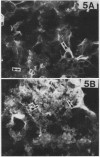Abstract
Fractionation of Papaver bracteatum Arya II Lindl. latex on Renografin step gradients revealed that 43% of the dopamine was compartmentalized along with α-mannosidase (40%) in vacuoles sedimenting in the 2% fraction. Twenty-two percent of the dopamine was in the supernatant, but a corresponding amount (18%) of α-mannosidase was also present suggesting vacuole breakage during isolation. By subcellular fractionation of protoplasts from cultured P. bracteatum cells, the 1,000g sedimenting organelles have been identified as the major site of accumulation of the morphinan alkaloid, thebaine (99±0.8%), and the benzophenanthridine alkaloid, sanguinarine (96±3%). Although the 1,000g pellet also contained 33±4% of the total alkaloid precursor, dopamine, and half of the total vacuolar marker enzyme, α-mannosidase, 62±10% of the amine was localized in the 100,000g supernatant. A differential distribution of the alkaloids was discovered upon resolution of the lysed protoplasts on Renografin step gradients. Over 40% of the dopamine was in the supernatant with 15% in a 2% Renografin band. The remainder was evenly distributed in denser fractions of the gradient. The 4 to 8% interface, previously found to contain the largest amount of thebaine and small amounts of sanguinarine and dopamine, has been shown to be enriched in vacuoles by electron microscopy. Using a histofluorescence method, dopamine compartmentation in vacuoles of intact cultured cells was corroborated. In summary, dopamine, sanguinarine, and thebaine occur in vacuoles of different densities. A large fraction of the total dopamine in cultured cells was found in the 100,000g supernatant along with 37% of the α-mannosidase suggesting that the amine may be sequestered in more fragile vacuoles than the alkaloids. The possibility that some dopamine may be cytosolic cannot be ruled out.
Full text
PDF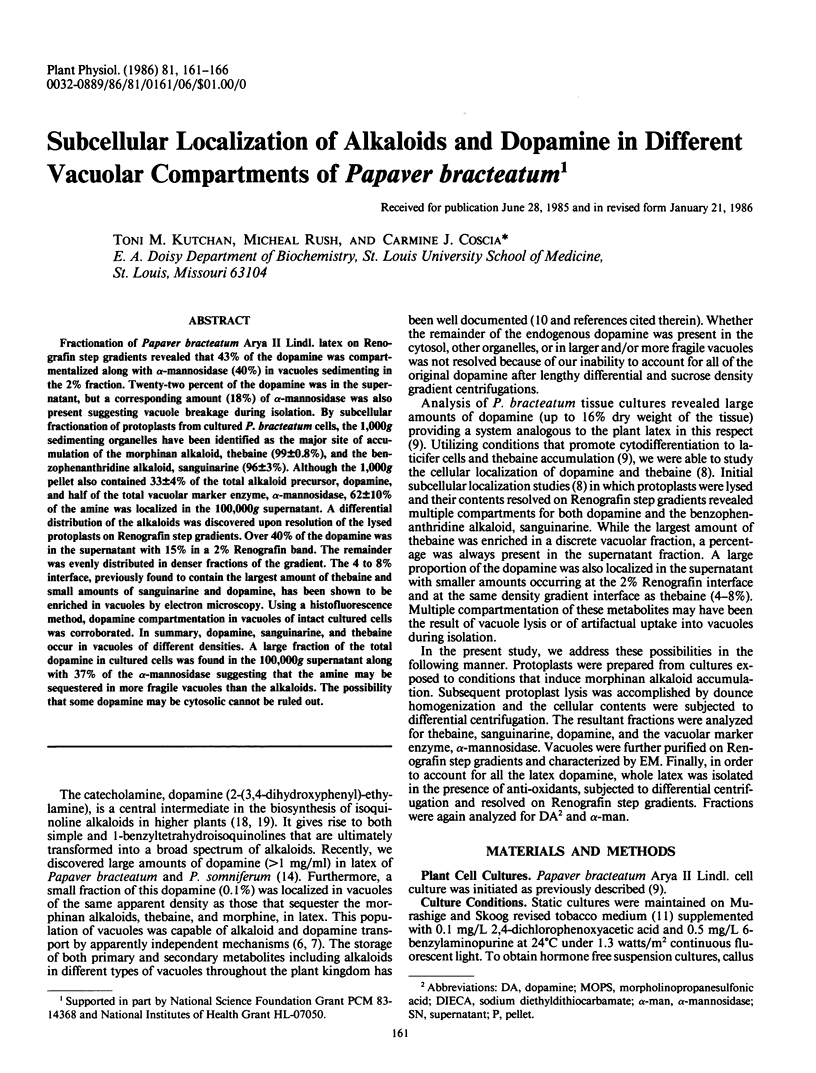

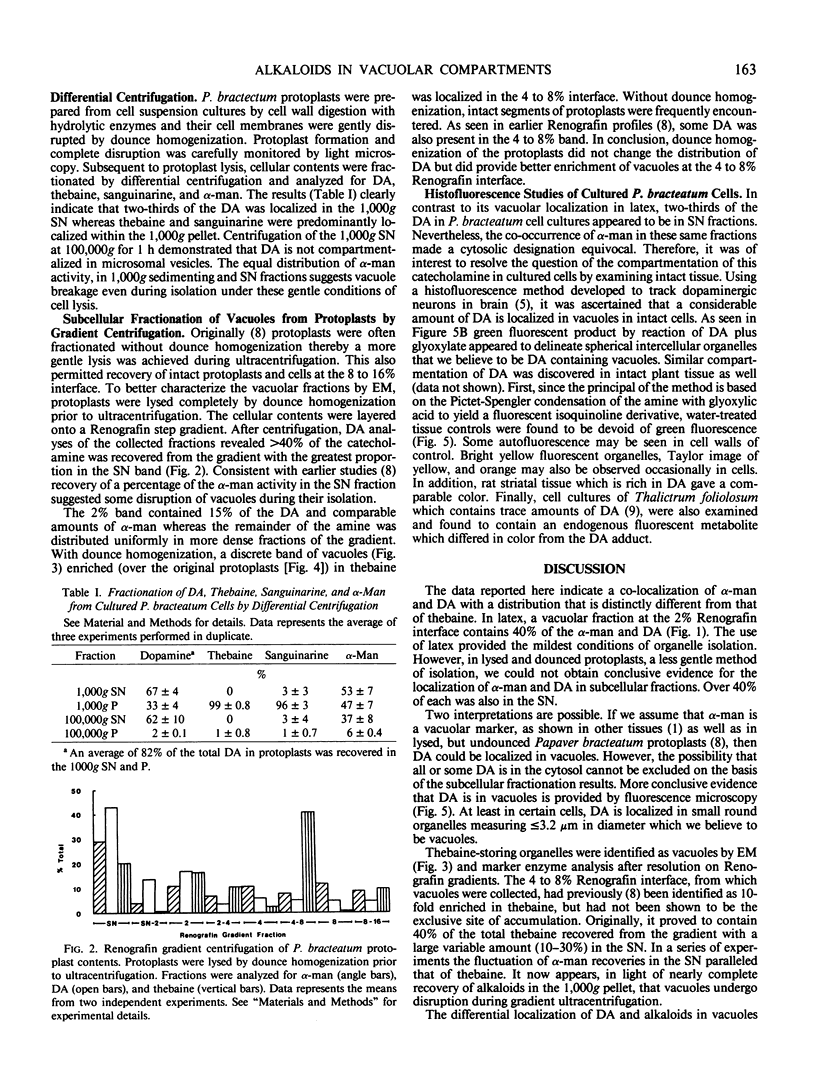
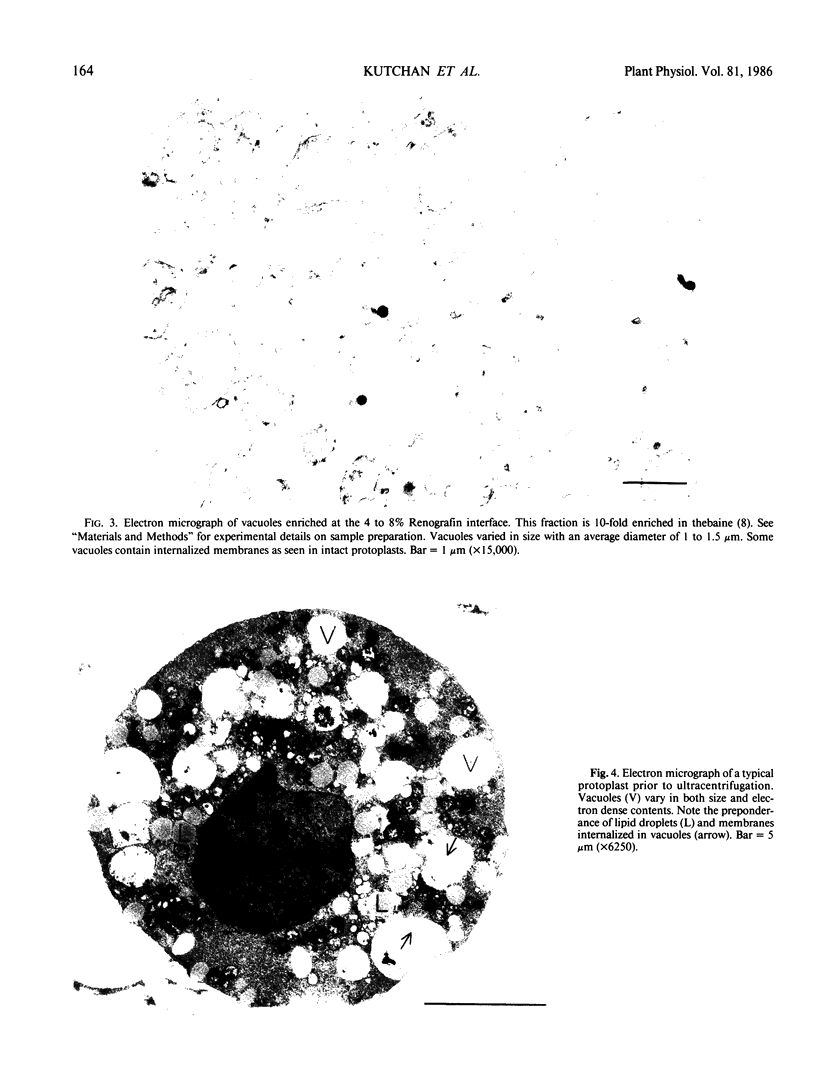
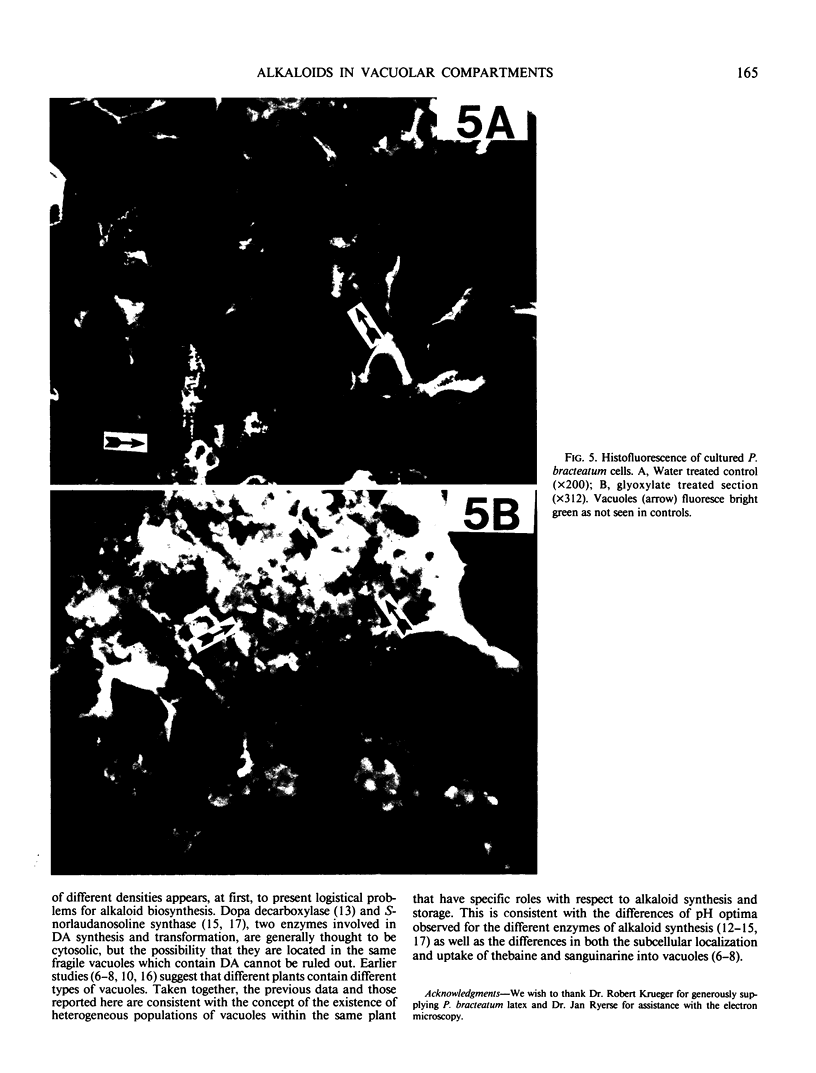
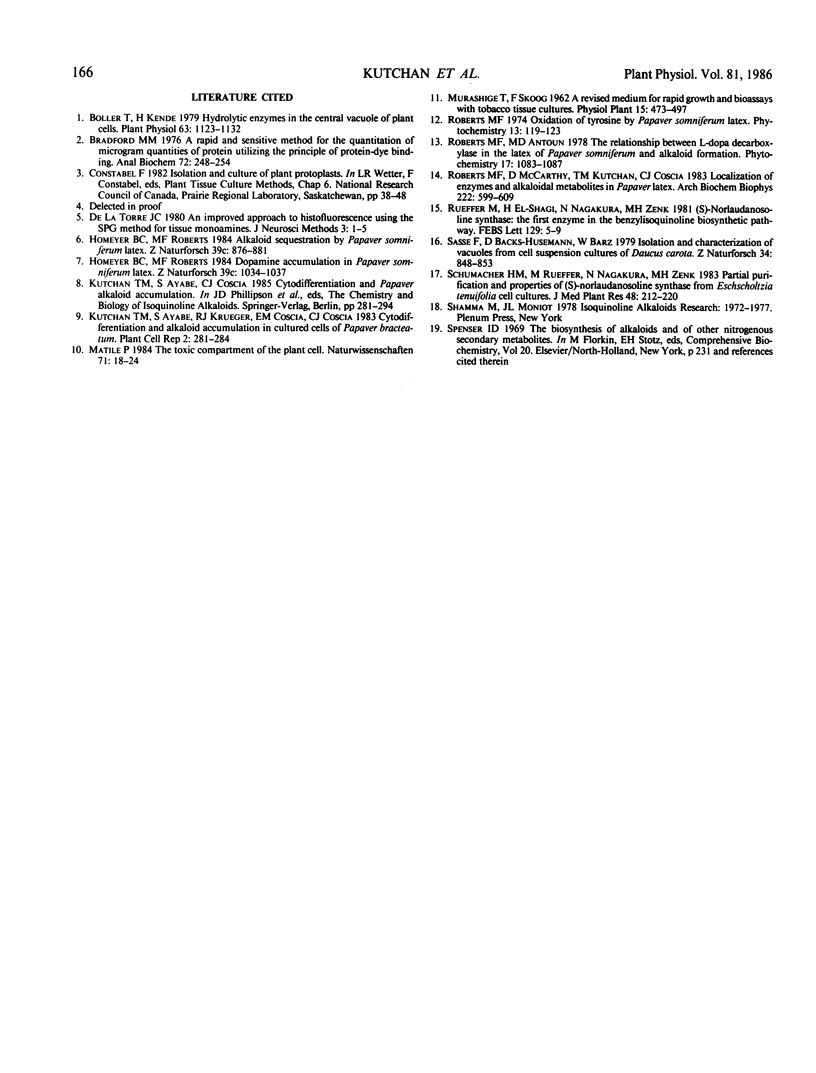
Images in this article
Selected References
These references are in PubMed. This may not be the complete list of references from this article.
- Boller T., Kende H. Hydrolytic enzymes in the central vacuole of plant cells. Plant Physiol. 1979 Jun;63(6):1123–1132. doi: 10.1104/pp.63.6.1123. [DOI] [PMC free article] [PubMed] [Google Scholar]
- Bradford M. M. A rapid and sensitive method for the quantitation of microgram quantities of protein utilizing the principle of protein-dye binding. Anal Biochem. 1976 May 7;72:248–254. doi: 10.1016/0003-2697(76)90527-3. [DOI] [PubMed] [Google Scholar]
- De la Torre J. C. An improved approach to histofluorescence using the SPG method for tissue monoamines. J Neurosci Methods. 1980 Oct;3(1):1–5. doi: 10.1016/0165-0270(80)90029-1. [DOI] [PubMed] [Google Scholar]
- Roberts M. F., McCarthy D., Kutchan T. M., Coscia C. J. Localization of enzymes and alkaloidal metabolites in Papaver latex. Arch Biochem Biophys. 1983 Apr 15;222(2):599–609. doi: 10.1016/0003-9861(83)90558-1. [DOI] [PubMed] [Google Scholar]
- Schumacher H. M., Rüffer M., Nagakura N., Zenk M. H. Partial Purification and Properties of (S)-Norlaudanosoline Synthase from Eschscholtzia tenuifolia Cell Cultures. Planta Med. 1983 Aug;48(8):212–220. doi: 10.1055/s-2007-969923. [DOI] [PubMed] [Google Scholar]





